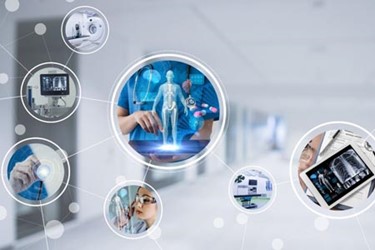DPHARM 2019: Emerging Technologies Set To Disrupt Clinical Trials

By Ed Miseta, Chief Editor, Clinical Leader

DPHARM: Disruptive Innovations, the annual conference sponsored by The Conference Forum, covers the full spectrum of clinical research with a focus on the innovators shaping the future of trials. Its goal is to bring together disruptive thinkers and change makers to discuss current solutions in clinical research and share ideas on how to transform drug development.
Tammy Guld, global team lead in Janssen Clinical Innovation, was a co-chair at this year’s conference. In this Q&A article, Guld discusses her insights from DPHARM and some key take-aways from the 2019 event.
Ed Miseta: I believe that former FDA commissioner Scott Gottlieb set the scene for this year’s DPHARM by stating that real-world data (RWD) is at an inflection point. How do you believe RWD will be applied to drive product innovation?

Miseta: Two other themes that seemed to be areas of focus at DPHARM were artificial intelligence and electronic health records/electronic data capture. How do you see these technologies disrupting clinical trials in the future?
Guld: There is a direct link to collaboration in the area of RWD, machine learning/artificial intelligence, and eSource/EHR to EDC in that healthcare organizations (HCOs) want to share their data. They want to share that data both with other HCOs as well as sponsor companies. This is a trend that is well aligned with the emerging hospital networks in Europe and the U.S.
Miseta: There are many in the industry who believe that cross-sponsor collaborations are needed to push the clinical trial vision further. How do you see those collaborations taking place?
Guld: I’m sure you’ve heard this said before, but we need to stop working in silos if we are to make any real transformational change. This is one of the reasons why I love participating at DPHARM. We have the ability to share learnings across our innovation portfolio and demonstrate how we are working in precompetitive spaces. Consortia like TransCelerate, along with public and private partnerships in Europe, can be fabulous mechanisms for going further together. The European Institute of Innovation and Technology (EIT) as well as the Innovative Medicines Institute (IMI) allow for many sponsors to collaborate within a funded model. There are also opportunities for companies to become catalyst and suggest a potential precompetitive project/mission. This has worked successfully with patient data return in the U.S. There are six sponsor companies working collaboratively with sites and patients to ensure a common playbook is developed.
Miseta: What will be the biggest roadblock to those collaborations?
Guld: The competitive nature of companies. We all know drug discovery is a competitive business, and companies will always be protective of their data and intellectual property. Collaboration is good and will help us get treatments to patients more effectively, but we will need to make sure sponsors do not feel they are giving up a competitive edge.
Miseta: eSource continues to be an area of focus for many pharma companies. Can you tell me what Janssen and other companies are doing to implement it?
Guld: Janssen is currently working in a precompetitive environment, which is the European EIT funded EHR2EDC (Electronic Health Records to Electronic Data Capture) systems project. We are working with multi-sponsors and multi-centers with additional efforts in the U.S. Based on the presentations I saw at DPHARM, it seems like many pharma companies are developing their own eSource initiative in isolation. I believe the space is ripe for transformation as this will increase the quality and velocity of data, reduce site burden, and ultimately get medicines to patients faster.
Miseta: Is eSource providing the time and cost savings that were promised?
Guld: That’s a good question. At this time, I think it is too early for us to say for certain. However, I feel it continues to be an important area of focus.
Miseta: Earlier you mentioned the EHR2EDC project. This is a project that enables the automated collection of patient data from EHRs. What do you think will be the long-term impact of this initiative on clinical trials?
Guld: I believe this will have a tremendous impact on site staff and the quality and speed of the data collected. Having consistent operations across investigational sites, across the globe, should be a collective aspiration. Any progress towards shortening the duration of clinical development is critical. We have patients in need of medication, and we must do everything we can to minimize the time it takes to get these medicines tested and approved.
Miseta: Tasso won the coveted DPAHRM Idol award for its micro-needling patch. Can you tell us about the pilot Janssen underway with Tasso?
Guld: All I can say is that it’s a pilot program in early development. We are not yet able to share any of the results.
